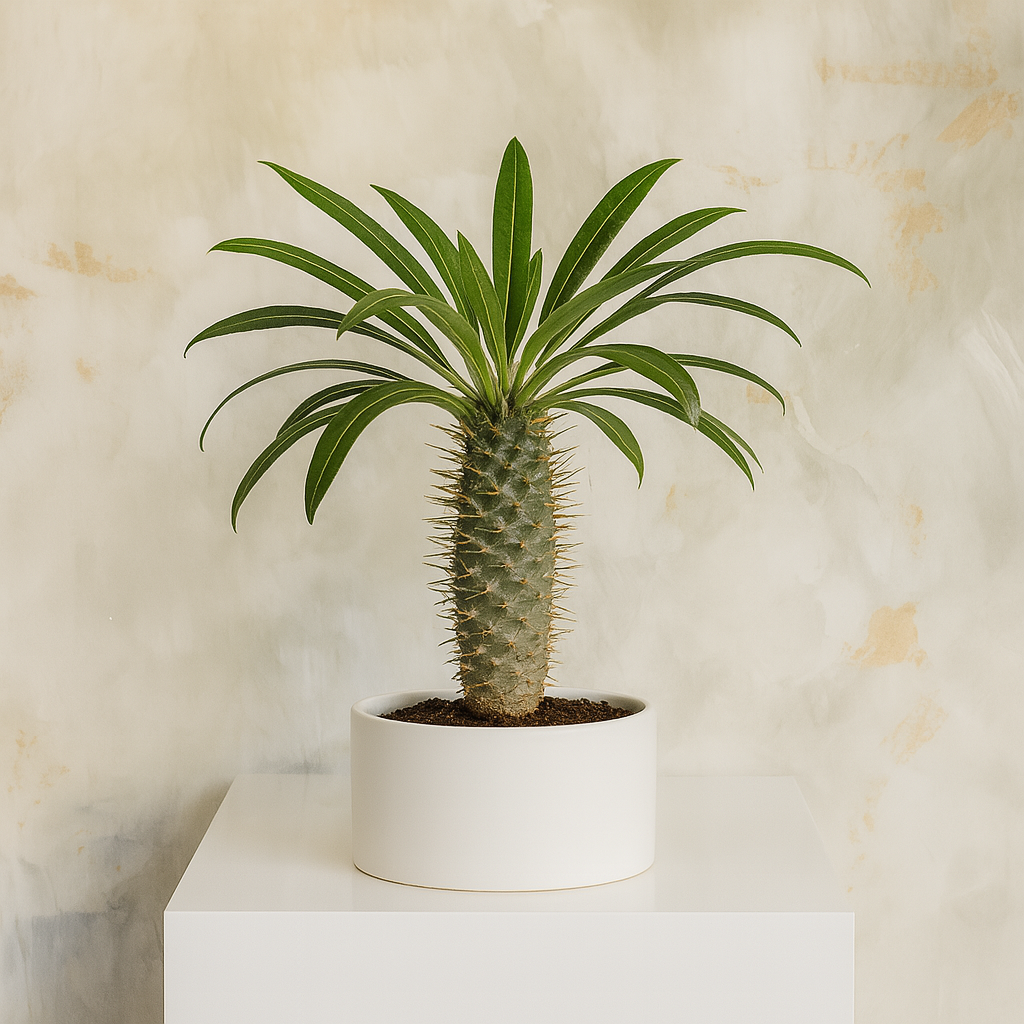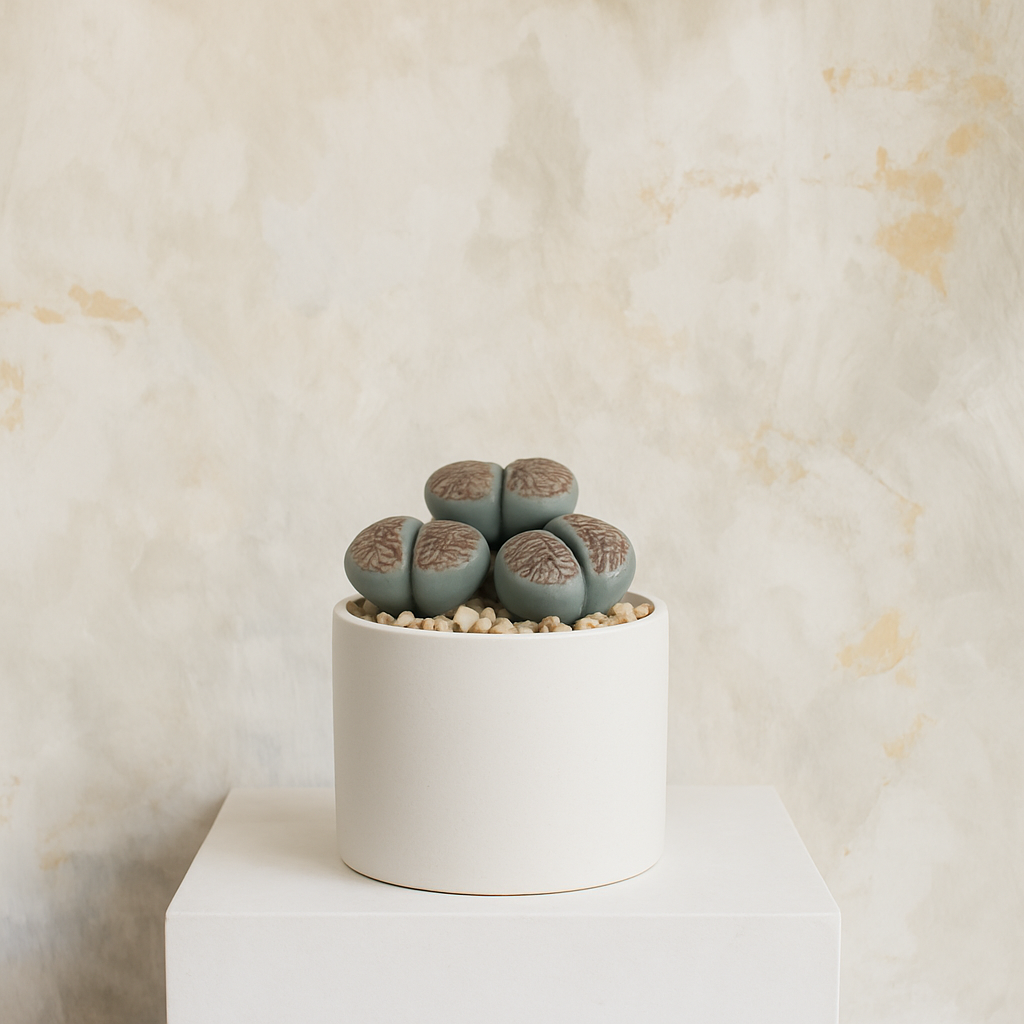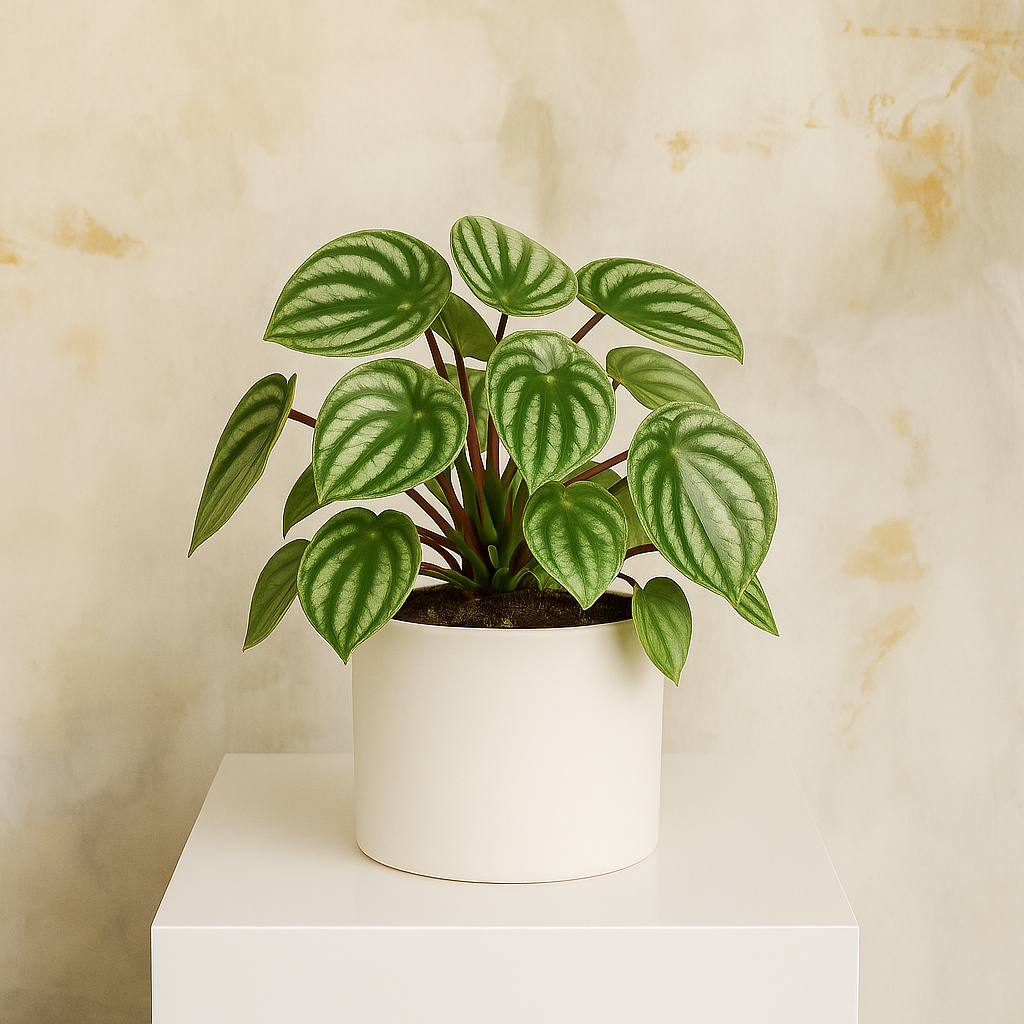
Madagascar Palm
Despite its name, the Madagascar Palm is not a true palm, it’s actually a type of succulent! Native to the arid regions of Madagascar, this plant features a thick, spiny trunk topped with a crown of long, leathery leaves, giving it a bold, architectural look. It’s slow-growing but makes a dramatic and low-maintenance addition to bright indoor spaces.
Pet Safe
No, the Madagascar Palm is toxic if ingested by pets or humans. Additionally, the spines on its trunk can be sharp, so place it out of reach of curious kids or animals.
Light
This plant loves bright, direct light. A sunny south- or west-facing window is ideal. It can even handle full sun outdoors in warm climates. Insufficient light may cause leaf drop or spindly growth.
Water Requirements
Water thoroughly when the soil is completely dry, typically every 2–4 weeks depending on your environment. The thick trunk stores water, so it’s drought-tolerant and highly sensitive to overwatering. During the winter, it enters dormancy and may drop its leaves, so make sure to water even less frequently during the colder months.
Watch out for…
Overwatering is the biggest danger, soft, black spots or a mushy trunk indicate rot. Leaf drop is normal during the colder months or if the plant is adjusting to a new environment. Watch for spider mites in dry indoor air. Handle with care, its spines are sharp!
Similar care to…
The Madagascar Palm has similar care needs to cacti, succulents like Euphorbia, and Ponytail Palms, all prefer full sun, infrequent watering, and well-draining soil.




Leave a comment
This site is protected by hCaptcha and the hCaptcha Privacy Policy and Terms of Service apply.